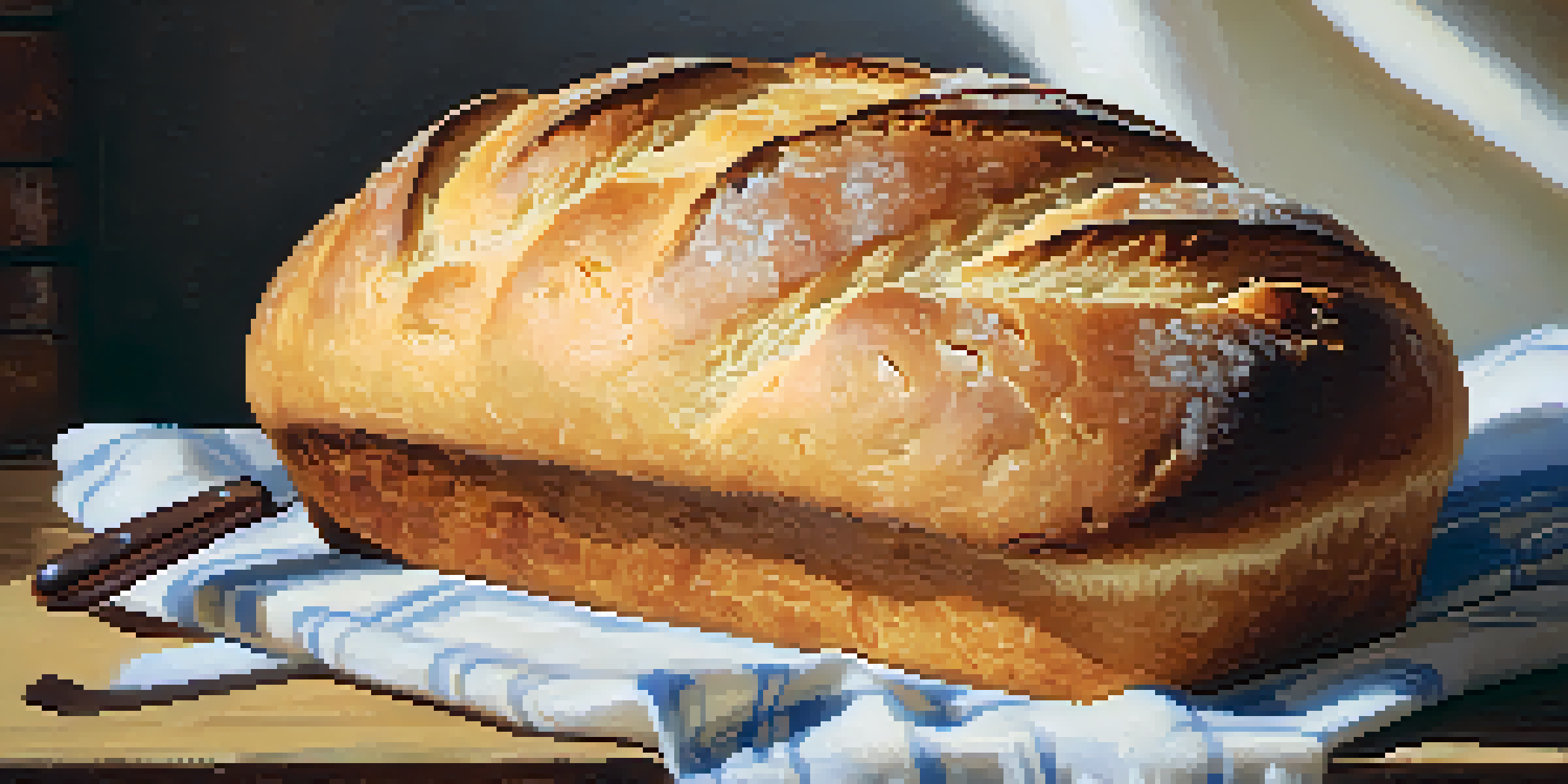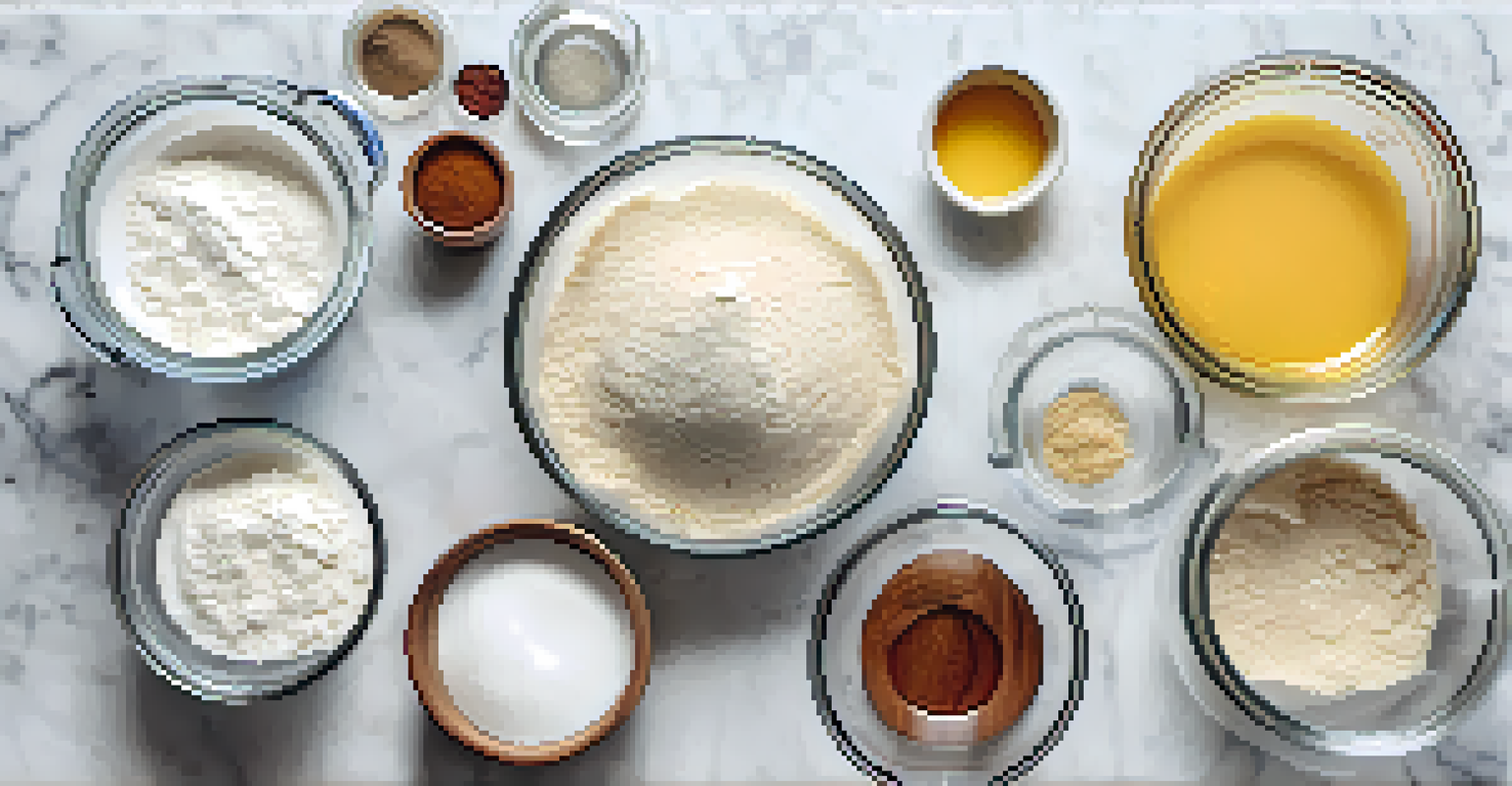No-Knead Bread: Simple Techniques for Effortless Baking

What is No-Knead Bread and Why Try It?
No-knead bread is a game changer for home bakers. Instead of the traditional method that requires hours of kneading, this technique simplifies the process dramatically. You mix flour, water, yeast, and salt, and let the dough rise for an extended period, usually overnight. This long fermentation develops flavor and texture without the elbow grease.
Baking is both an art and a science, and no-knead bread beautifully combines both worlds.
Imagine waking up to the aroma of freshly baked bread without the labor-intensive kneading! This method is perfect for those who want to enjoy homemade bread without spending hours in the kitchen. Plus, it's a fantastic way to impress family and friends with minimal effort.
Whether you're a seasoned baker or a complete novice, no-knead bread offers an accessible entry point into the world of artisan-style baking. It’s all about patience and simplicity, making it an ideal project for busy lifestyles.
Essential Ingredients for No-Knead Bread
The beauty of no-knead bread lies in its simplicity, and the ingredient list reflects that. You only need flour, water, yeast, and salt—easy to find and often already in your pantry. Each ingredient plays a critical role: flour provides structure, water hydrates the flour, yeast creates air pockets, and salt enhances flavor.

For many, the choice of flour can be exciting. You can stick with all-purpose flour for a classic loaf or experiment with whole wheat or specialty flours for different tastes and textures. This flexibility allows you to play around with flavors that suit your palate.
Simple Ingredients for Great Bread
No-knead bread requires just flour, water, yeast, and salt, making it easy to whip up with pantry staples.
Don’t forget about the importance of quality ingredients! Fresh yeast and good-quality salt can significantly influence the final taste. Investing in these basics can elevate your no-knead bread to bakery-level deliciousness.
Step-by-Step Process: Making No-Knead Bread
Making no-knead bread is as straightforward as mixing, resting, and baking. Start by combining your dry ingredients in a bowl before adding water. Stir until you have a shaggy dough, then cover it with plastic wrap and let it rest for 12 to 18 hours. The magic happens during this long fermentation as flavors develop.
Good bread is the most fundamentally satisfying of all foods; and good bread with fresh butter, the greatest of feasts.
After the long wait, you’ll notice your dough has bubbled up and become airy. Lightly flour your work surface, and using a spatula, gently fold the dough onto itself. This step is crucial for creating those delightful air pockets without the need for kneading.
Finally, preheat your oven with a Dutch oven inside, then carefully transfer your dough into it. Cover and bake for about 30 minutes, then remove the lid to let it brown. The result? A crusty, golden loaf that’s perfect for sandwiches or simply slathered with butter.
Tips for Perfecting Your No-Knead Bread
To achieve the perfect loaf, there are a few tips to keep in mind. First, the temperature of your ingredients and environment can affect yeast activity. Room temperature water is ideal, and a warm spot for fermentation can speed up the process on cooler days.
Another key tip is to allow your dough enough time to rise. If you’re short on time, just remember: patience is your best friend here. A longer fermentation not only develops flavor but also makes the dough easier to shape and handle.
Patience Makes Perfect Bread
Allowing the dough to ferment for 12 to 18 hours enhances flavor and texture without the need for kneading.
Finally, don’t hesitate to experiment! Add herbs, spices, or even nuts and dried fruits to create variations of your no-knead bread. Personalizing your bread can turn a simple recipe into a signature dish.
Common Mistakes to Avoid When Baking
Even the most straightforward recipe can lead to mishaps. One common mistake is not using enough water, which can result in a dense loaf. Remember, the dough should be quite wet and sticky; that’s what gives no-knead bread its characteristic open crumb.
Additionally, be mindful of your rising time. If you rush the process, you might end up with a loaf that lacks flavor and texture. Trust your instincts and the recipe—if it says to let it rise overnight, do just that!
Lastly, don’t forget to preheat your Dutch oven! This step is crucial for achieving that beautiful crust. Skipping it can lead to bread that doesn’t rise properly and lacks that bakery-style crunch.
Serving Suggestions for No-Knead Bread
Now that you've mastered no-knead bread, it’s time to enjoy it! Freshly baked bread is best served warm, straight out of the oven. You can slice it and serve with a spread of butter or olive oil for a simple yet delightful treat.
Consider pairing your bread with soups and stews, as it’s perfect for soaking up those delicious flavors. It also makes a fantastic base for bruschetta or toasted sandwiches, allowing you to get creative with toppings.
Avoid Common Baking Mistakes
Using enough water and properly preheating your Dutch oven are crucial steps to achieve a crusty, flavorful loaf.
And if you have leftovers, don’t worry! No-knead bread holds up well for a few days. You can make croutons or toast slices for breakfast, transforming your bread into delicious new meals.
Storing Your No-Knead Bread: Best Practices
To keep your no-knead bread fresh, storing it correctly is essential. The best practice is to wrap it in a clean kitchen towel and place it in a paper bag. This method allows the crust to stay crisp while preventing the inside from drying out.
If you know you won’t finish your loaf within a couple of days, consider freezing it. Slice the bread first, then wrap individual pieces in plastic wrap and place them in a freezer bag. This way, you can enjoy a slice whenever you crave fresh bread.

When you’re ready to eat frozen bread, simply toast it directly from the freezer or let it thaw at room temperature. It’s a convenient way to always have delicious homemade bread on hand without the daily baking!